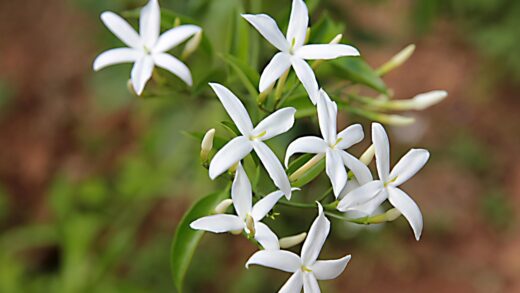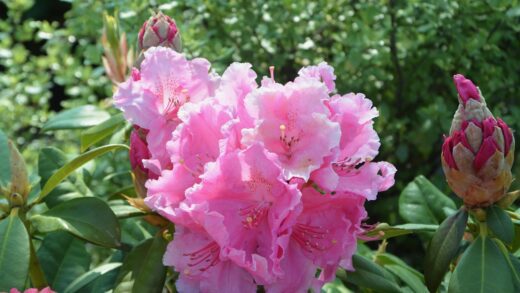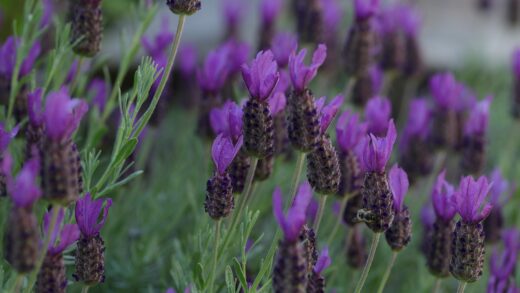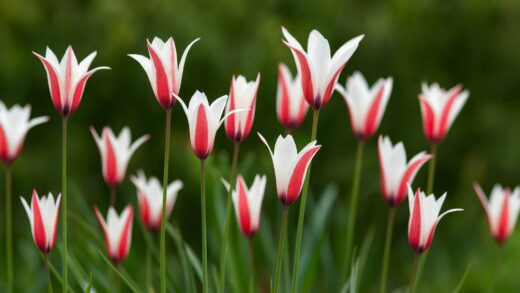Blue oat grass is a model of self-sufficiency when it comes to nutrition, having evolved to thrive in environments where soil fertility is naturally low. This intrinsic quality makes it an exceptionally easy-care plant for the modern garden. A common misconception among gardeners is that all plants benefit from regular feeding, but for blue oat grass, the opposite is often true. Providing excess nutrients, particularly nitrogen, can be detrimental, leading to weak, floppy growth and a diminished blue coloration. Therefore, the best approach to fertilization is one of restraint, as this grass performs at its peak in lean, unamended soil.
The plant’s preference for low-fertility conditions means that in the vast majority of garden settings, no supplemental fertilization is necessary. Average garden soil contains more than enough nutrients to support the healthy growth of blue oat grass. Before you even consider adding fertilizer, it is important to understand that the plant’s vigor and color are primarily influenced by sunlight and soil drainage, not by nutrient levels. Focusing your energy on providing these two fundamental requirements will yield far better results than applying any type of plant food.
If you are planting in an area that was previously a heavily fertilized vegetable garden or a rich flower bed, the soil may actually be too fertile for blue oat grass. In such cases, you can help to “lean out” the soil by incorporating sand or grit, which will dilute the nutrient content while also improving drainage. This proactive step helps to create the spartan conditions in which the grass naturally flourishes. The goal is to encourage a strong, sturdy plant, and lean soil promotes exactly that kind of growth.
Ultimately, the most effective “feeding” you can provide for your blue oat grass is to allow it to grow in the conditions it prefers. A hands-off approach to nutrition is not a sign of neglect but rather a sign of understanding the plant’s specific needs. By refraining from adding unnecessary fertilizers, you are allowing the plant to develop its natural resilience and structural integrity, resulting in a more beautiful and long-lasting garden specimen.
The philosophy of lean soil cultivation
Cultivating blue oat grass successfully is rooted in the philosophy of “less is more.” This plant’s aesthetic and structural qualities—its stiff, upright blades, tight clumping habit, and intense blue color—are all best expressed when it is grown in lean soil. Lean soil, by definition, is low in organic matter and nutrients. This type of environment discourages the rapid, lush growth that high-nitrogen fertilizers promote and instead encourages the plant to grow in a slower, stronger, and more controlled manner.
More articles on this topic
When blue oat grass is planted in overly rich or heavily fertilized soil, the results are often counterproductive. The excess nitrogen stimulates rapid cell elongation, leading to longer, weaker leaf blades that lack the rigidity to support themselves. This results in a plant that is prone to “flopping,” where the clump splays open from the center, creating an untidy, disorganized appearance. This not only ruins the architectural form of the plant but also makes it more susceptible to fungal diseases due to reduced air circulation within the clump.
Furthermore, the intense silvery-blue color of the foliage is often most pronounced in plants grown under slight stress, which includes lean soil conditions. In rich soil, the foliage tends to become a duller, more greenish-blue color, losing the metallic sheen that makes the plant so striking. The spartan conditions of lean soil seem to concentrate the waxy coating on the leaves that is responsible for its unique coloration. Therefore, by avoiding fertilizers, you are actively helping the plant to achieve its best possible color.
Adopting a lean soil approach requires a shift in the traditional gardening mindset of constant feeding and soil enrichment. For plants like blue oat grass, the focus should be on creating the right physical soil structure—one that is gritty and well-draining—rather than on boosting its chemical fertility. This approach not only benefits the plant but also reduces garden maintenance, lowers costs associated with fertilizers, and promotes a more naturalistic style of gardening.
When fertilization might be necessary
While the standard rule for blue oat grass is to avoid fertilization, there are a few specific and uncommon scenarios where a very modest application of nutrients may be warranted. The primary instance is when the plant is growing in extremely impoverished soil, such as pure sand or heavily leached soil where even basic minerals are lacking. In these rare cases, the plant may exhibit signs of a genuine nutrient deficiency, which is different from the desirable stress of simply lean soil.
More articles on this topic
Signs of a true nutrient deficiency can include stunted growth, a general lack of vigor over multiple seasons, and significant yellowing of the leaves (chlorosis) that is not attributable to overwatering. If you observe these symptoms and have already ruled out other potential causes like poor drainage or insufficient sunlight, a soil test can be a valuable tool. A soil test will provide a clear picture of the nutrient profile of your soil and confirm if there is a specific deficiency that needs to be addressed.
If a deficiency is confirmed, or if the soil is exceptionally poor, a single, light feeding in the early spring can be beneficial. The key is to choose the right type of fertilizer and to apply it sparingly. A balanced, slow-release granular fertilizer with a low N-P-K (Nitrogen-Phosphorus-Potassium) ratio is the best choice. Look for formulations designed for perennials or native plants rather than those intended for heavy-feeding annuals or vegetables. Applying the product at half the rate recommended on the packaging is a safe and prudent approach.
It is crucial to apply the fertilizer only in the early spring as new growth begins. Fertilizing later in the season, especially in the late summer or autumn, can stimulate new growth that will not have time to harden off before winter. This tender new foliage is highly susceptible to frost damage, which can harm the overall health of the plant. A single, well-timed, and conservative application is all that should ever be considered.
Organic vs. synthetic fertilizers
When a rare need for fertilization arises, gardeners have the choice between organic and synthetic options. For blue oat grass, if you must fertilize, organic methods are generally the safer and more beneficial choice. Organic fertilizers, such as well-rotted compost or a balanced, all-purpose organic granular feed, release their nutrients slowly over time as they are broken down by soil microorganisms. This slow-release mechanism is much more aligned with the plant’s modest nutritional needs and is less likely to cause the sudden, weak growth associated with high-nitrogen synthetic feeds.
A thin top-dressing of high-quality compost around the base of the plant in early spring is perhaps the best organic approach. The compost provides a very gentle and broad spectrum of nutrients and trace minerals, while also gradually improving the soil’s structure and water-holding capacity without making it overly rich. This method mimics the natural decomposition of organic matter that occurs in the plant’s native habitat. Be sure to keep the compost from being piled up against the crown of the plant to prevent any risk of rot.
Synthetic fertilizers, on the other hand, are formulated with concentrated, water-soluble nutrients that are immediately available to the plant. While this can be beneficial for heavy-feeding plants, it can easily overwhelm a species adapted to lean conditions like blue oat grass. The sudden influx of nutrients, especially nitrogen, can trigger a flush of weak, floppy growth that compromises the plant’s form and health. If a synthetic fertilizer is the only option, it is imperative to choose a balanced, slow-release formula and to use it at a significantly reduced rate.
Ultimately, the choice of fertilizer should be guided by the principle of caution. The risk of over-fertilizing blue oat grass and causing long-term damage to its structure and appearance is far greater than the risk of it suffering from a minor nutrient deficiency. Organic options provide a much larger margin for error and support the overall health of the soil ecosystem, making them the preferred choice for this low-maintenance ornamental grass.
The impact of nutrients on foliage color
The stunning, metallic blue-gray color of blue oat grass foliage is arguably its most celebrated feature. Interestingly, the intensity of this color is directly influenced by the plant’s growing conditions, including the nutrient content of the soil. Optimal color is typically achieved when the plant is grown in full sun and in soil that is lean and not overly fertile. This suggests that a certain level of environmental stress is actually beneficial for the development of its most vibrant coloration.
The blue hue is produced by a waxy, protective coating, known as epicuticular wax, on the surface of the leaf blades. This wax layer helps the plant conserve moisture by reflecting solar radiation and reducing water loss through transpiration—an adaptation to its native sunny, dry habitat. When the plant is grown in lean soil, it tends to produce a thicker and denser layer of this protective wax, which in turn enhances the silvery-blue appearance of the foliage.
Conversely, when blue oat grass is grown in nutrient-rich soil, especially soil with high levels of nitrogen, it often shifts its energy allocation. Instead of investing in protective wax coatings, it prioritizes rapid foliage production. This results in leaves that are larger, softer, and more green in color, as the waxy blue layer is thinner and less pronounced. While the plant may be growing vigorously, it loses the unique aesthetic quality that makes it so valuable in the garden.
Therefore, to maximize the blue coloration of your blue oat grass, it is essential to resist the temptation to fertilize. Providing lean soil conditions is a direct method of encouraging the plant to produce the waxy coating responsible for its beautiful color. This is a clear case where providing less—fewer nutrients and less water—results in a more visually appealing and structurally sound plant. The best color is a sign of a healthy plant growing in the specific conditions it has evolved to prefer.
📷: Drew Avery, CC BY 2.0, via Wikimedia Commons


















